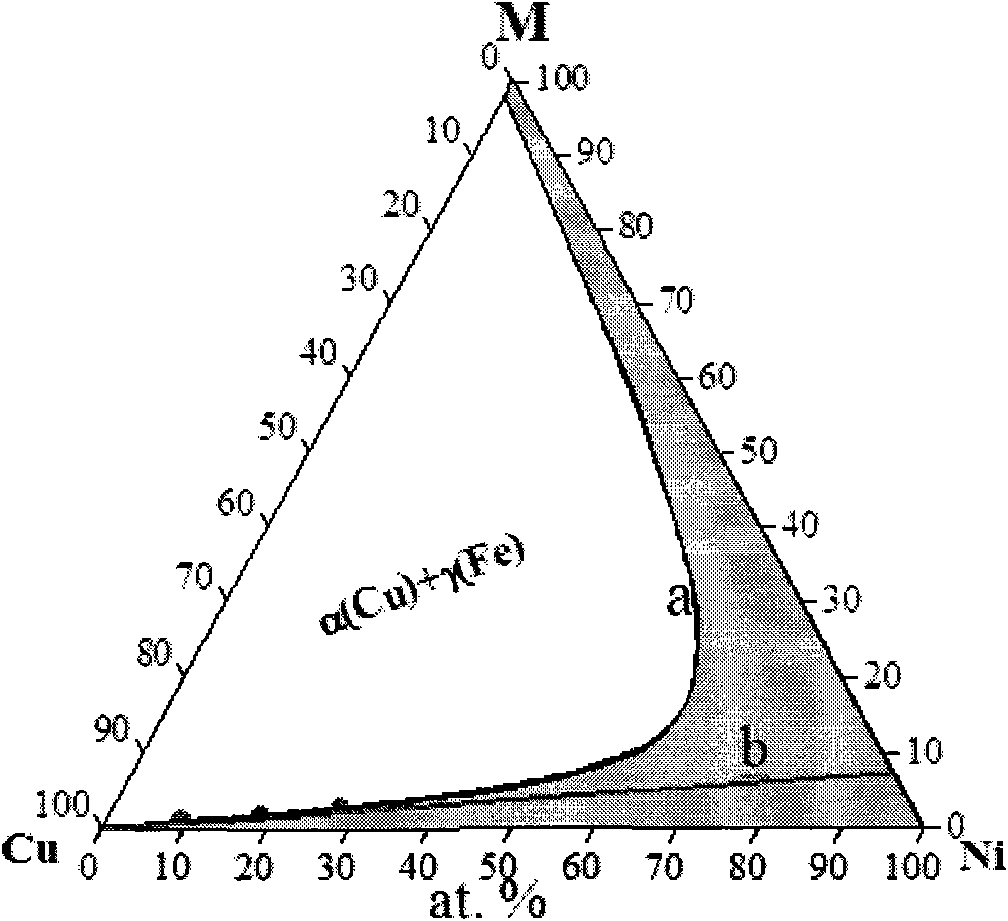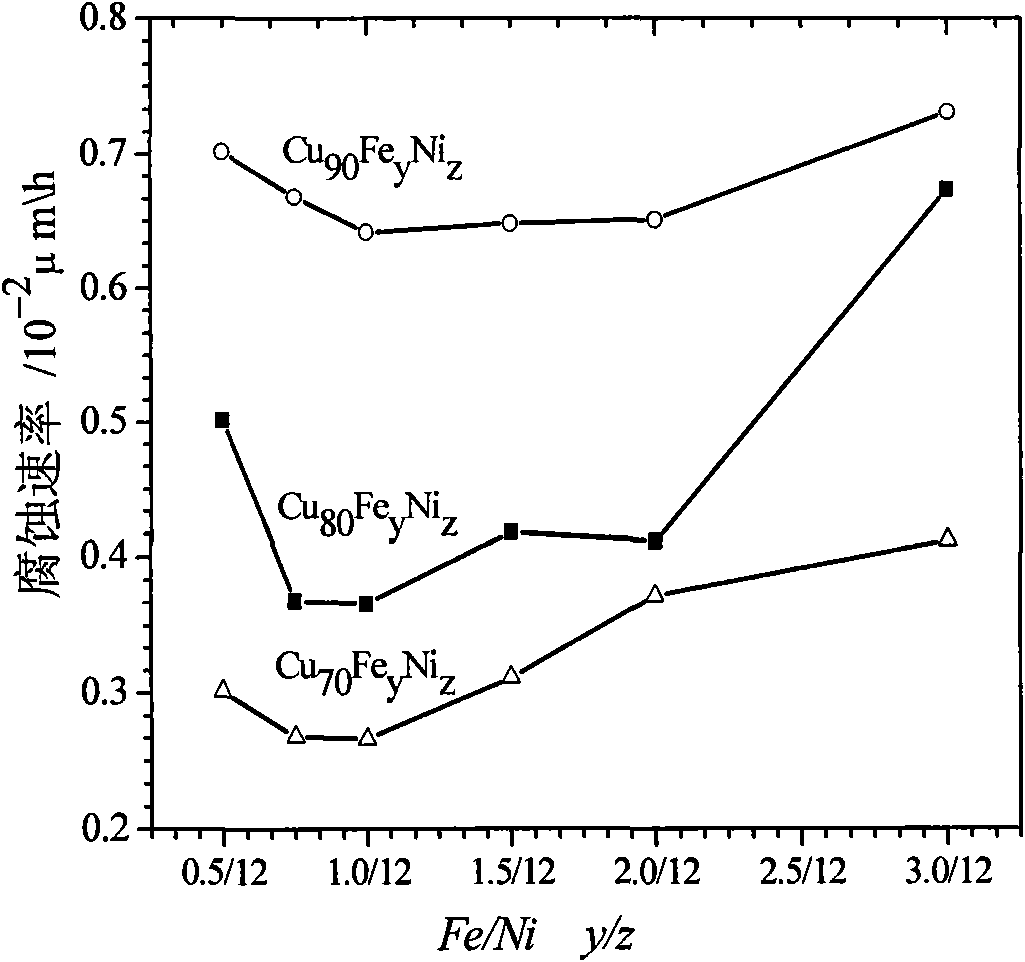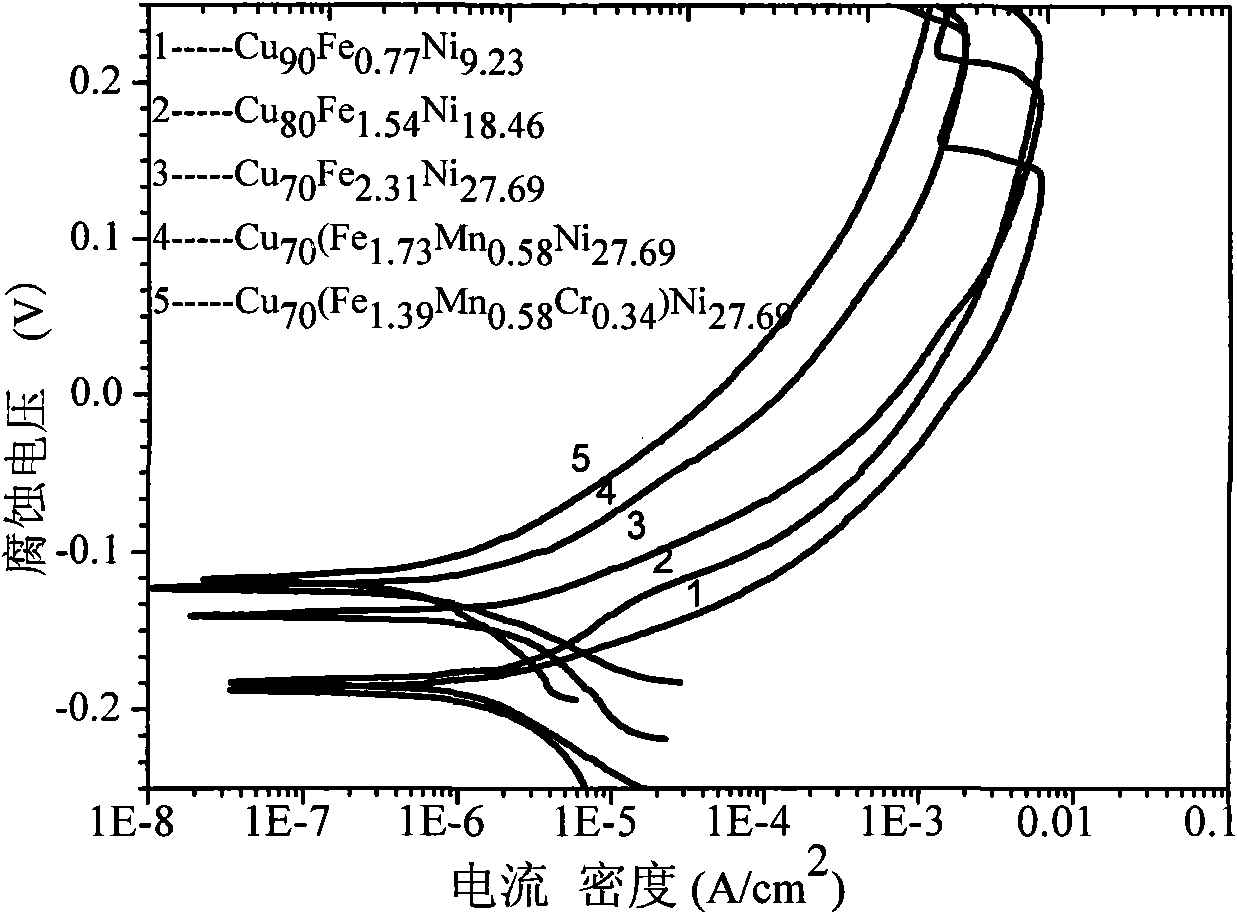Copper-nickel based multielement high corrosion resisting alloy
A high-corrosion-resistant, copper-nickel-based technology, applied in the field of metal materials, can solve the problems of not fully grasping the specific influence mechanism of added elements, time-consuming and laborious, and not yet discovered, so as to solve the problem of optimizing corrosion-resistant components and overcome arbitrary The effects of toughness, excellent processability and corrosion resistance
- Summary
- Abstract
- Description
- Claims
- Application Information
AI Technical Summary
Problems solved by technology
Method used
Image
Examples
Embodiment 1
[0033] Example 1 Cu 90 m y Ni z Preparation of Solid Solution Alloy and Its Corrosion Resistance Test
[0034] 1. Preparation of Cu 90 m y Ni z Alloy (y / z=0.5 / 12, 0.75 / 12, 1 / 12, 1.5 / 12, 2 / 12, and y+z=10%) alloy mixture. Convert the atomic percentage in the above alloy into weight percentage, mix the mixture, put the proportioned mixture in the water-cooled copper crucible of the electric arc melting furnace, and use non-consumable arc melting under the protection of argon to melt, The smelting current is 200A. After the smelting is completed, it is turned over and placed in the water-cooled copper crucible again for the second smelting. Repeat the smelting for at least 5 times to obtain an alloy with uniform composition.
[0035] 2. Add Cu 90 m y Ni z After the alloy was kept in solid solution at 800°C for 5 hours in a vacuum annealing furnace, the sample was taken out and quenched in water to obtain a solid solution alloy with uniform composition after heat treatment...
Embodiment 2
[0038] Example 2 Cu 80 m y Ni z Alloy (y / z=0.5 / 12, 0.75 / 12, 1 / 12, 1.5 / 12, 2 / 12, and y+z=20%) preparation and corrosion resistance test
Embodiment 3
[0039] Example 3 Cu 70 m y Ni z Alloy (y / z=0.5 / 12, 0.75 / 12, 1 / 12, 1.5 / 12, 2 / 12, and y+z=30%) preparation and corrosion resistance test
PUM
 Login to View More
Login to View More Abstract
Description
Claims
Application Information
 Login to View More
Login to View More - R&D
- Intellectual Property
- Life Sciences
- Materials
- Tech Scout
- Unparalleled Data Quality
- Higher Quality Content
- 60% Fewer Hallucinations
Browse by: Latest US Patents, China's latest patents, Technical Efficacy Thesaurus, Application Domain, Technology Topic, Popular Technical Reports.
© 2025 PatSnap. All rights reserved.Legal|Privacy policy|Modern Slavery Act Transparency Statement|Sitemap|About US| Contact US: help@patsnap.com



